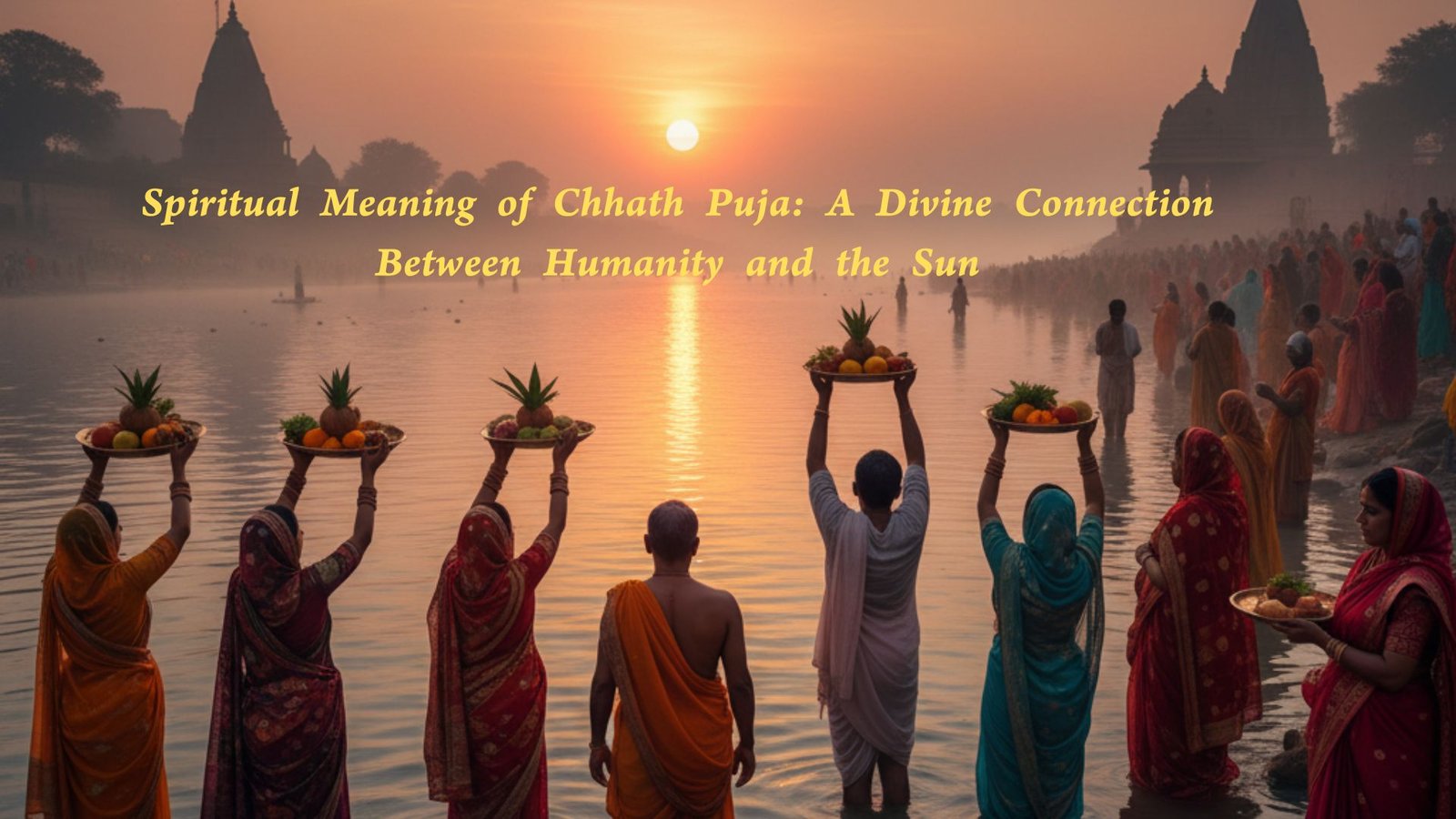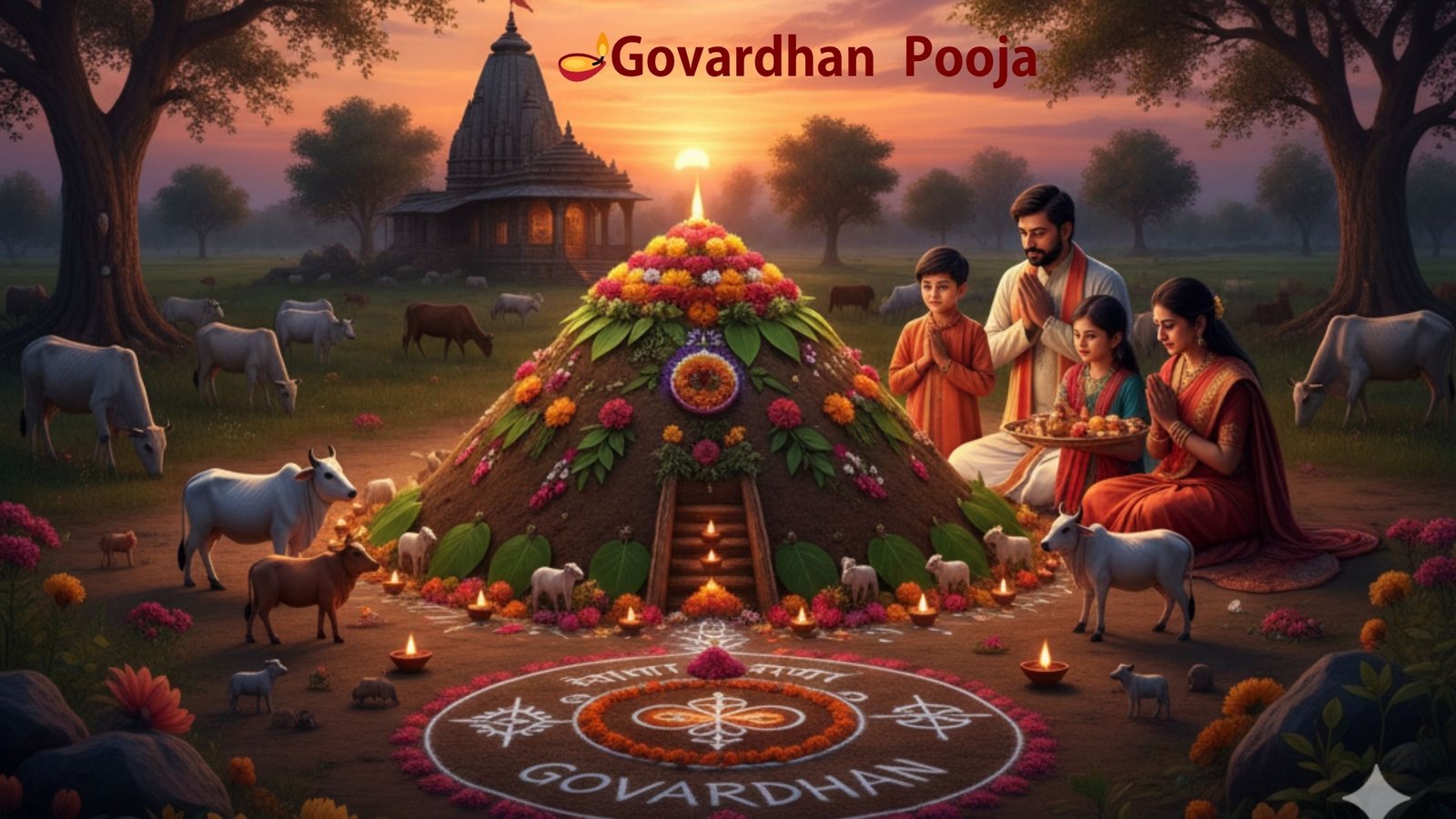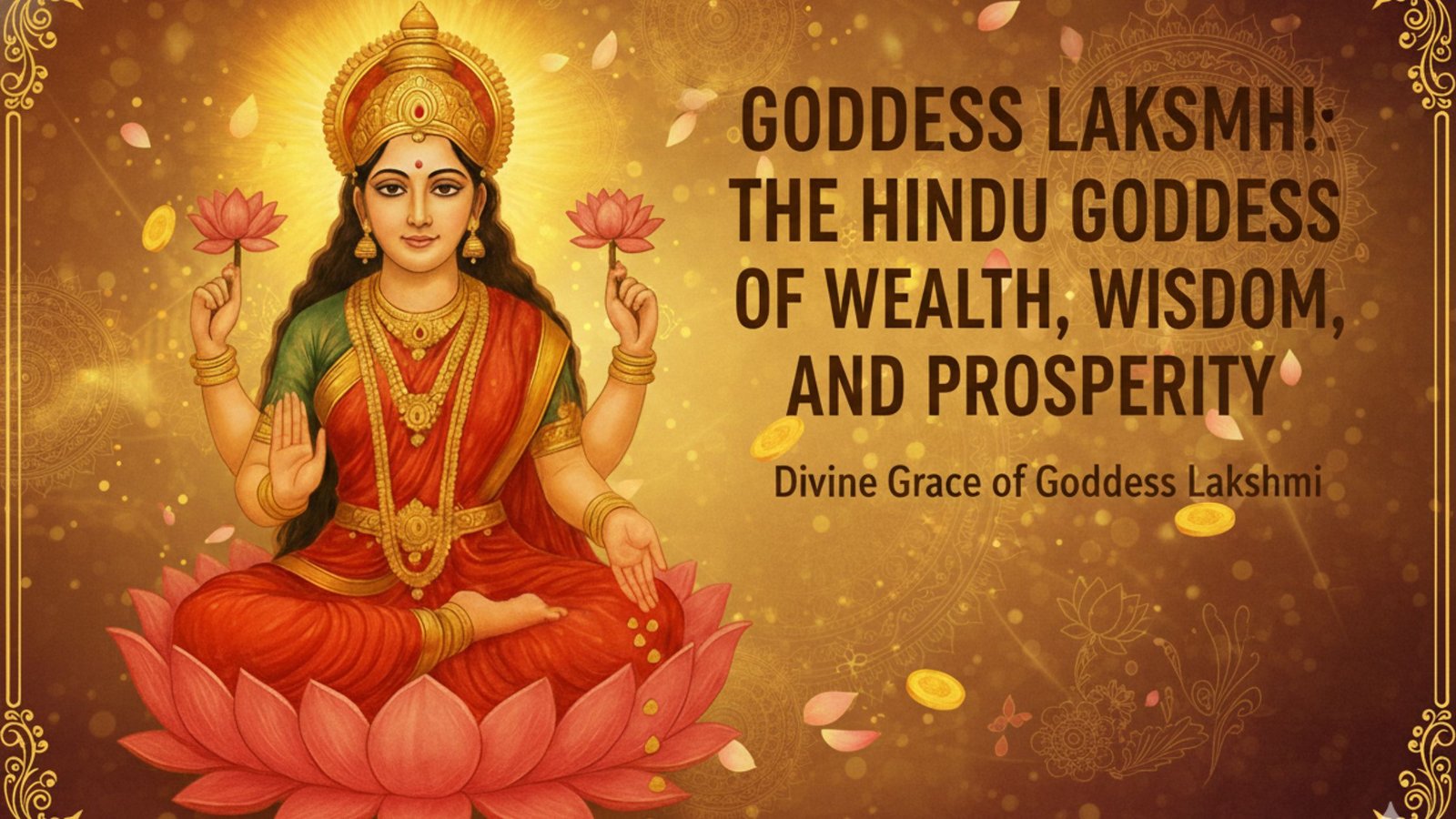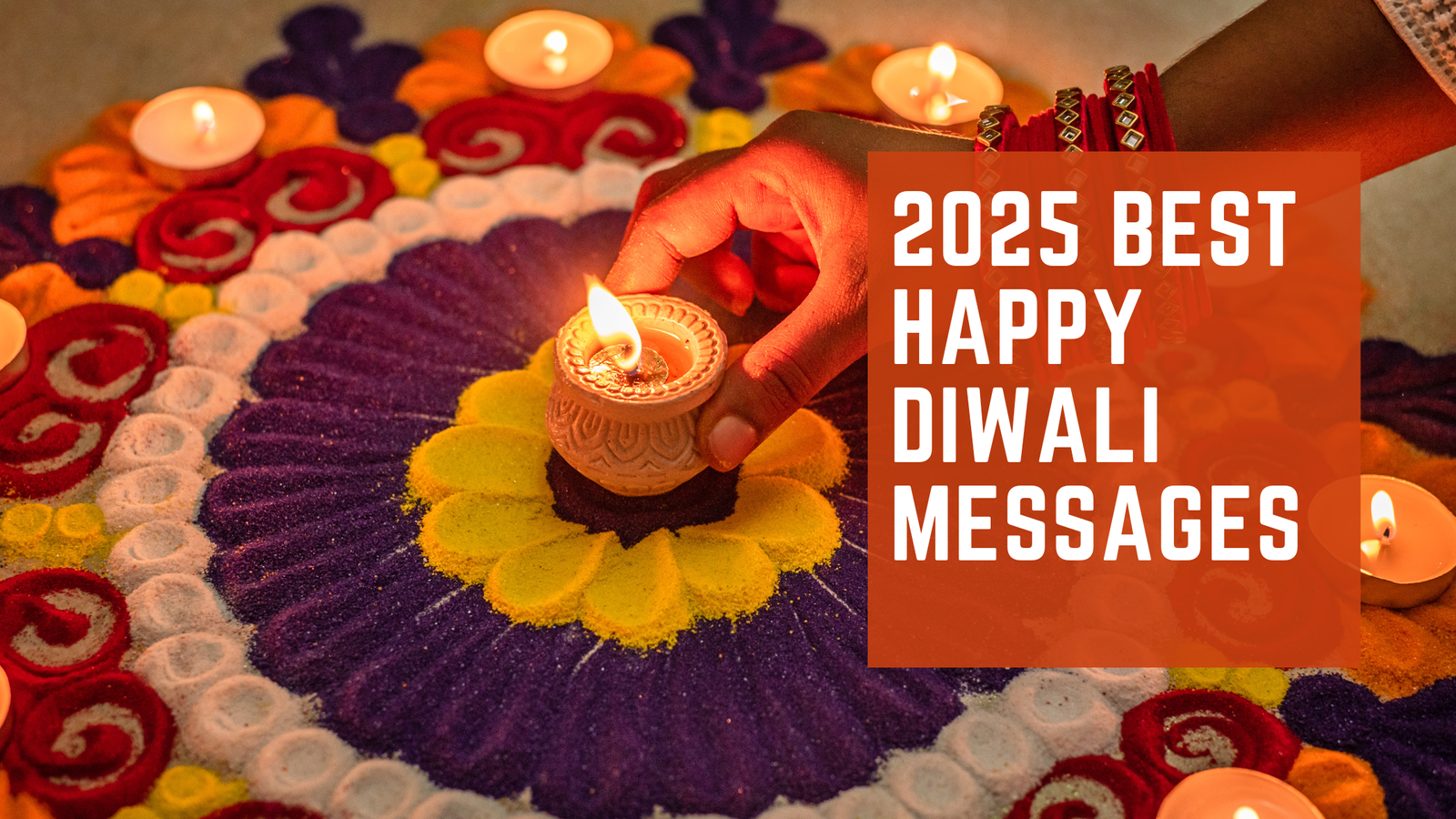Explore the spiritual meaning of Chhath Puja and the deeper symbolism of Sun worship in Hinduism. Discover how this ancient festival reflects devotion, purity, and the universal teachings of the Bhagavad Gita.
Chhath Puja is not just a ritual — it is a spiritual discipline that connects human beings directly with the source of life — the Sun. Celebrated mainly in Bihar, Jharkhand, Uttar Pradesh, and Nepal, this ancient festival is dedicated to Surya Dev (the Sun God) and Chhathi Maiya (the Goddess of Dawn).
At its core, the spiritual meaning of Chhath Puja lies in expressing gratitude for life, nature, and cosmic balance. It represents a journey from material existence to spiritual consciousness — a theme beautifully aligned with the teachings of the Bhagavad Gita.
Table of Contents

The Origins of Chhath Puja
Chhath Puja is believed to date back to the Vedic period, where rituals of Sun worship in Hinduism were performed to seek energy, purity, and healing. The Rigveda mentions hymns dedicated to Surya, the ultimate symbol of vitality and divine light.
In the Mahabharata, it is said that Kunti — the mother of the Pandavas — performed a similar ritual to honor the Sun God, which blessed her with divine strength. This shows how deep-rooted Sun worship in Hinduism is in both mythology and daily life.
The spiritual meaning of Chhath Puja emerges from this belief — that by connecting with the Sun, one connects with the divine consciousness that governs the universe.
Rituals and Symbolism of Chhath Puja
The spiritual meaning of Chhath Puja is deeply reflected in its four-day sequence of rituals that represent purification, self-discipline, and connection with cosmic energy
Chhath Puja is observed over four days, and each day holds profound spiritual symbolism:
- Nahay Khay (Purification):
Devotees begin by bathing in holy rivers and preparing pure vegetarian meals — symbolizing the cleansing of both body and mind. - Kharna (Self-discipline):
Fasting and meditation during this day represent detachment and self-control, aligning with Gita’s message of moderation and self-mastery. - Sandhya Arghya (Offering to the Setting Sun):
The evening offering honors the balance of creation and destruction — a reminder of life’s cyclical nature. - Usha Arghya (Offering to the Rising Sun):
Worshipping the morning Sun signifies renewal, rebirth, and divine energy — the essence of spiritual awakening.
Each of these steps is more than a ritual — it’s a reflection of inner transformation. The spiritual meaning of Chhath Puja thus becomes a guide to living with discipline, faith, and gratitude toward the divine light that sustains life.
Through these rituals, Sun worship in Hinduism teaches us that energy, life, and purity are divine gifts that sustain existence.

The Bhagavad Gita and the Sun: A Symbol of the Supreme Self
In the Bhagavad Gita (Chapter 4, Verse 1), Lord Krishna says:
“I instructed this imperishable science of Yoga to the Sun God, Vivasvan, who then taught it to Manu, the father of mankind.”
This verse reveals that spiritual wisdom first emerged from the Sun, representing the eternal source of knowledge and light. Sun worship in Hinduism thus becomes more than ritual — it becomes a reminder that divinity shines within every being.
The Sun symbolizes consciousness — the eternal witness of our thoughts, actions, and intentions. By praying to the Sun, devotees recognize the inner light (Atman), just as Krishna teaches Arjuna to see beyond the physical world and embrace the spiritual truth.
When devotees bow before the Sun, they are not worshipping mere light — they are honoring the Supreme Self, as taught in the Gita. Just as Krishna guided Arjuna to see the divine essence in all beings, the spiritual meaning of Chhath Puja reminds us to recognize the same inner light within ourselves and the world around us.
Lessons from Chhath Puja in Daily Life
The spiritual meaning of Chhath Puja goes beyond worship — it offers timeless life lessons that align perfectly with the Gita’s wisdom:
- Discipline and Devotion:
Like Arjuna’s focus on his duty, Chhath devotees practice strict discipline and unwavering faith. - Gratitude Toward Nature:
The Sun gives without expecting anything in return — a reflection of selfless karma yoga. - Purity and Simplicity:
The simple rituals teach that spiritual progress lies in purity of mind, not material extravagance. - Balance and Harmony:
Offering arghya to both the setting and rising Sun symbolizes balance — between day and night, joy and sorrow, success and struggle.
Each of these lessons from the Spiritual Meaning of Chhath Puja serves as a spiritual mirror, guiding us to rise above material distractions and recognize the divine light within
The Spiritual Meaning of Chhath Puja extends far beyond ritual observance — it offers timeless guidance for living a balanced and purposeful life.
Modern Relevance of Chhath Puja
In today’s fast-paced, digital world, Chhath Puja reminds us to pause and reconnect with nature and inner peace. As pollution and imbalance threaten our environment, this ritual of Sun worship in Hinduism becomes a message of ecological and spiritual restoration.
Just as Krishna said in the Gita:
“The one who sees all beings in the Self and the Self in all beings never turns away from it.”
(Bhagavad Gita 6:29)
This line beautifully captures the Chhath Puja spirit — unity between humans, nature, and divinity.
Frequently Asked Questions (FAQs)
1. What is the spiritual meaning of Chhath Puja?
The spiritual meaning of Chhath Puja lies in expressing gratitude to the Sun God for sustaining life on Earth. It symbolizes purity, discipline, and devotion. Through fasting and prayer, devotees connect with nature and the divine, reflecting the essence of the Bhagavad Gita — selfless action and spiritual awakening.
2. Why is the Sun worshiped during Chhath Puja?
The Sun is considered the visible form of divine energy in Sun worship in Hinduism. Worshipping the Sun during Chhath Puja signifies honoring the eternal source of life, health, and wisdom. It teaches devotees to respect natural forces that sustain all beings.
3. What is the connection between Chhath Puja and the Bhagavad Gita?
In the Bhagavad Gita, Lord Krishna mentions imparting spiritual wisdom first to the Sun God, symbolizing the origin of divine knowledge. Similarly, Chhath Puja represents devotion to the Sun as a divine teacher and life-giver, aligning deeply with the Gita’s spiritual philosophy.
4. How does Sun worship in Hinduism promote spiritual growth?
Sun worship in Hinduism encourages balance, gratitude, and mindfulness. It reminds devotees that light and energy are not only physical but also spiritual — awakening inner consciousness and removing darkness of ignorance. This practice helps cultivate self-awareness and peace.
5. What are the life lessons from Chhath Puja?
Chhath Puja teaches discipline, purity, and gratitude. It encourages living in harmony with nature, practicing self-control, and maintaining faith in divine timing — all values deeply rooted in both Sun worship in Hinduism and the Bhagavad Gita’s teachings on karma and devotion.
Conclusion: The Light Within
The spiritual meaning of Chhath Puja is not just about rituals; it’s about rising with the Sun within you. Every offering to Surya Dev symbolizes surrender, gratitude, and awareness that life itself is sacred.
Through Sun worship in Hinduism, devotees rediscover the eternal truth of the Gita — that the divine light shines equally in all beings, guiding us toward harmony, purity, and enlightenment.
Final Thought:
“When you rise each day to greet the Sun, remember — you’re not worshipping the light outside you, but the divine radiance within.”
“Just as the Sun rises each day to illuminate the world, the teachings of The Gita guide us to awaken the light within — reminding us that true worship begins when we see divinity in ourselves and all creation.”
Discover more spiritual insights at The Gita









